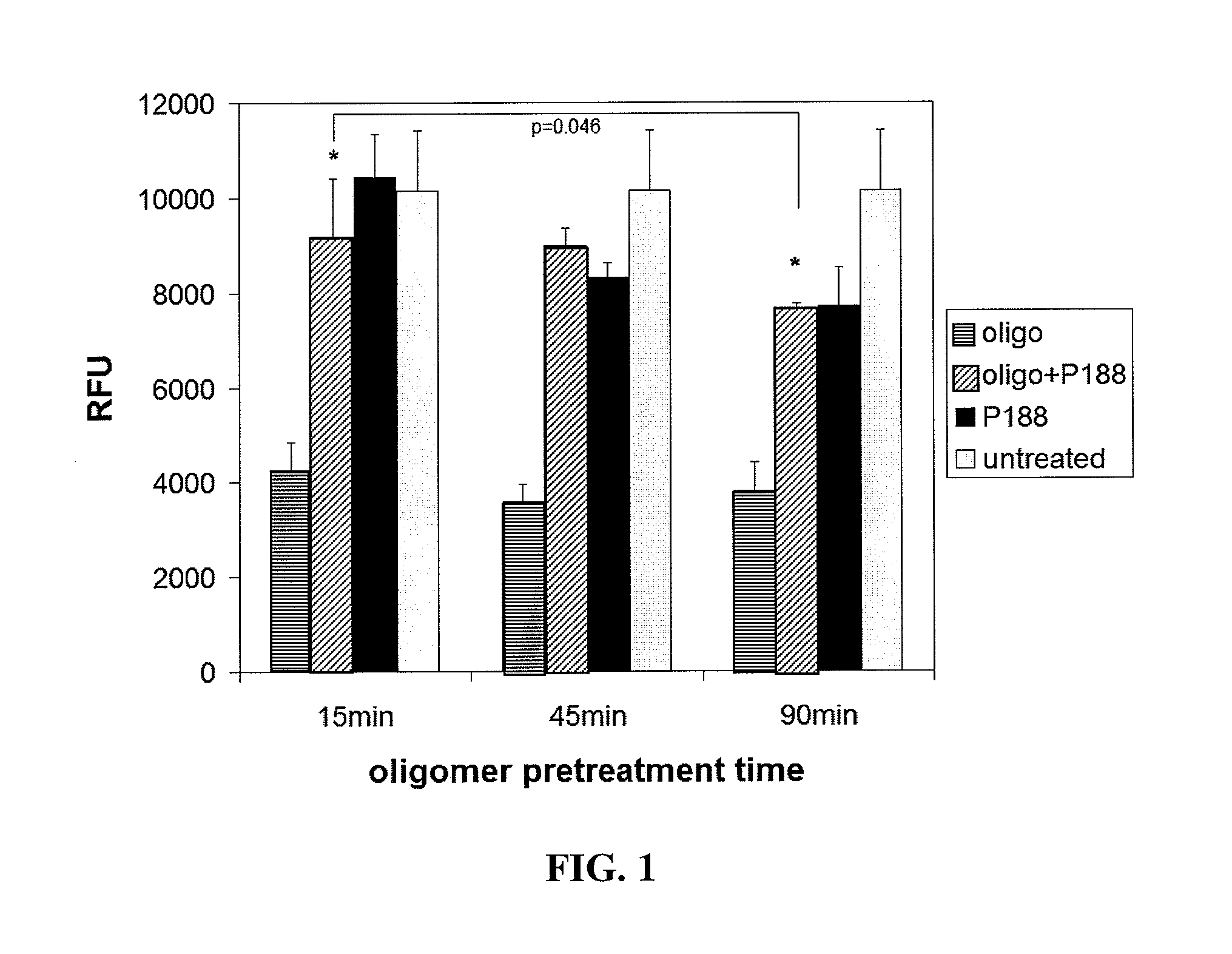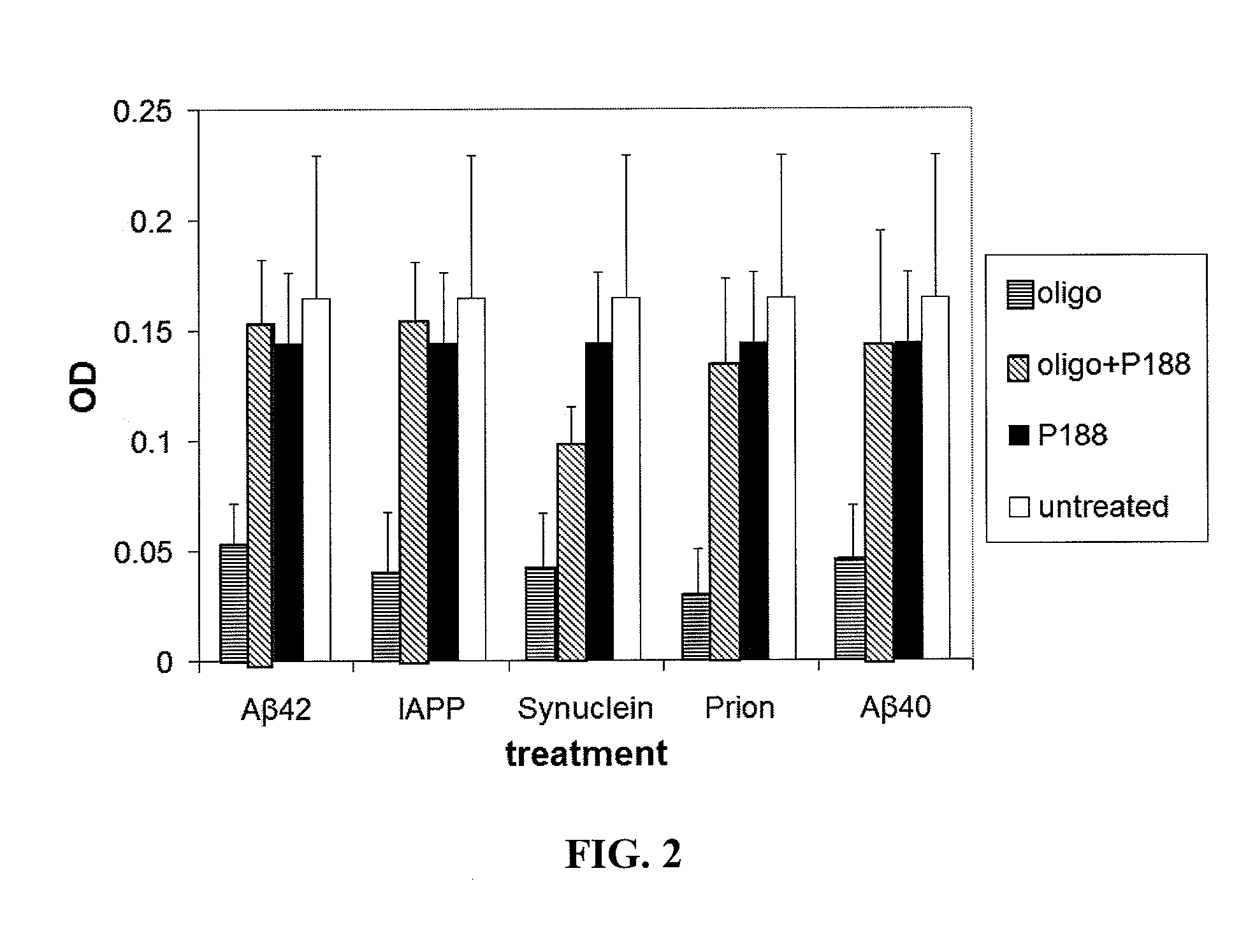Compositions and methods related to poloxamer copolymer membrane sealant
a technology of membrane sealant and poloxamer, applied in the field of biology and medicine, can solve problems such as cell death, achieve the effects of promoting cell survival, less effective treatment, and restoring cell viability
- Summary
- Abstract
- Description
- Claims
- Application Information
AI Technical Summary
Benefits of technology
Problems solved by technology
Method used
Image
Examples
example 1
Poloxamer Increases Cell Survival
[0109]P188 increases the viability of oligomer-treated cells in a time-dependent manner Poloxamer P188 treated SH-SY5Y cells demonstrated increased survival following incubation with Aβ42 oligomers (FIG. 1). Importantly, the earlier P188 was applied to the cells, the more likely they were to recover. When P188 was added to cells 15 min post-oligomer exposure, there was a 16% increase in cell survival as compared to those that were exposed to oligomers for 90 minutes prior to P188 addition (FIG. 1). Therefore, the longer the cells were exposed to the oligomers prior to P188 addition, the less effectively P188 rescued the damaged cells, as assayed by AlamarBlue fluorescence.
[0110]Similarly for oligomers of other amyloid proteins, addition of P188 after 15 minutes increased SH-SY5Y cell survival by 61% (Aβ42), 69% (IAPP), 34% (α-synuclein), 64% (prion 106-126), and 59% (Aβ40), compared to oligomer treatment alone as measured by MTT (FIG. 2). Additionall...
PUM
| Property | Measurement | Unit |
|---|---|---|
| Composition | aaaaa | aaaaa |
| Toxicity | aaaaa | aaaaa |
| Disorder | aaaaa | aaaaa |
Abstract
Description
Claims
Application Information
 Login to View More
Login to View More - R&D
- Intellectual Property
- Life Sciences
- Materials
- Tech Scout
- Unparalleled Data Quality
- Higher Quality Content
- 60% Fewer Hallucinations
Browse by: Latest US Patents, China's latest patents, Technical Efficacy Thesaurus, Application Domain, Technology Topic, Popular Technical Reports.
© 2025 PatSnap. All rights reserved.Legal|Privacy policy|Modern Slavery Act Transparency Statement|Sitemap|About US| Contact US: help@patsnap.com



